
By failing to educate students about the many genocides the U.S. government has supported, they promote a dangerous nationalistic ideology.
In the age of the pandemic, as many high school classes are being taught remotely, the value of personal interaction for students cannot be overstated. While traditional high school history classes center on reading a textbook, analyzing primary and secondary sources, and writing, none of these activities really serve to move the study of the past beyond the realm of the abstract for many students.
For me, this point was made clear this past week as I sat in the audience with my students (on a Zoom call), and we heard the testimony of a Jewish-American survivor of the Holocaust. Students were clearly moved by the details of her experiences, as evidenced by the numerous questions in the chat that were difficult to keep up with. Even the most effective educators would be hard-pressed to achieve the level of engagement with history that was on display as the students interacted with the guest speaker. However, while I was heartened to see the uptick in student interest, it occurred to me that these young people were learning about genocide in a manner that was at best incomplete, and at worst enabling further incidents of mass murder.
The Problem: We Are Engaged in a Form of Genocide Denial
Within the standard curriculum in U.S. schools, the study of genocide is generally limited to the mid-20th century crime perpetrated by the Nazis on the Jewish, Roma, homosexual, and physically disabled populations of Europe. The phrase often associated with Holocaust studies is “Never again.” These words, etched into a memorial at the Treblinka concentration camp, convey the necessity of learning about the Nazi commission of extermination, and imply that omitting such events from our education would be tantamount to complicity in allowing future genocides to occur.
However, it seems that we (the collective of educators in the United States) are more than comfortable in omitting other acts of genocide, all of which violate the spirit of “Never again.” I refer to the genocides that occurred in Indonesia (1965), Pakistan (1971), East Timor (1975), Guatemala (1980s), Iraq (1990s), Rwanda-Congo (1990) or Yemen (2015-present), along with that directed against Native-Americans.
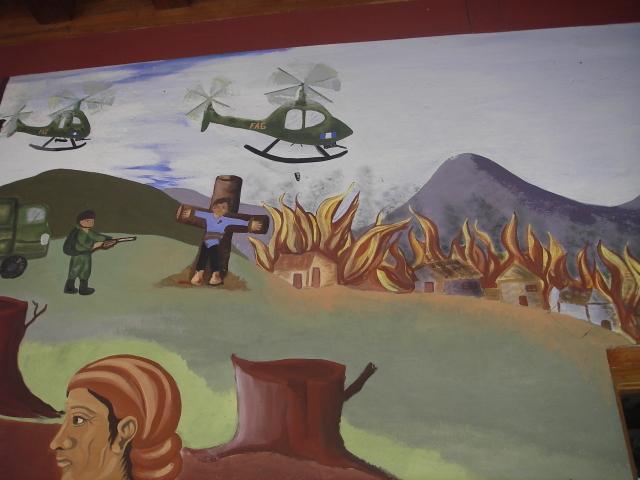
A dispassionate observer could easily surmise that the lack of focus on these atrocities is not incidental to the fact that the commission of these atrocities were all tacitly or directly supported by the United States.
By permitting students to graduate high school without learning about these major crimes for which their government was deeply complicit, we are engaging in a form of genocide denial.
Our collective negligence is evidenced by the fact that, while nearly every American is aware of the name Adolf Hitler, few would be familiar with names like General Suharto and Efraín Ríos Montt; the latter two were both U.S. allies and are implicated in genocide.
![Suharto, on the left in sunglasses, ushered in three decades of military dictatorship [AP]](https://covertactionmagazine.com/wp-content/uploads/2021/04/suharto-on-the-left-in-sunglasses-ushered-in-thr.jpeg)
Perhaps the best indicator of our failure to properly educate the U.S. public about genocide is the fact that, since the Holocaust, the “never again” aspiration starkly contrasts with a reality that is more accurately characterized with the phrase “again and again.”
Genocidal Beginnings Echo in a Genocidal Present
While considering the way U.S. students are educated about genocide, it is important to have the question in mind: Does my government actually oppose genocide?
To begin with, it is worth acknowledging the word “genocide” is contentious and can be overused. For purposes of this essay, the definition that will be utilized is the version agreed upon at the United Nations’ Genocide Convention of 1948. According to Article II of that document,
“Genocide means any of the following acts committed with intent to destroy, in whole or in part, a national, ethnical, racial or religious group, as such:
- Killing members of the group;
- Causing serious bodily or mental harm to members of the group;
- Deliberately inflicting on the group conditions of life calculated to bring about its physical destruction in whole or in part;
- Imposing measures intended to prevent births within the group;
- Forcibly transferring children of the group to another group.”
Article III of the same document goes on to say explicitly that offenses that are punishable are not limited to the actual commission of genocide. Nations can also be held culpable for attempts to commit the crime along with complicity in the act.
Returning to the earlier query about the U.S. and genocide, by the standard articulated in Article III, U.S. officials would be punishable for at minimum six instances of genocide throughout its 244-year history.
Genocidal Beginnings for Uncle Sam: the Indigenous of North America
While U.S. schools have done a better job in recent decades addressing the mass extermination of the indigenous population of North America, the education on the topic, given the scale of the crime, remains woefully insufficient.

That scale, by some estimates, was the eradication of nearly 90% of the 80 million original inhabitants of the continent during both the colonial era and early history of the nation. The very call for independence of the 13 colonies from Great Britain was significantly based on a genocidal instinct on the part of the colonists.
The British empire issued the Royal Proclamation of 1763 after the cessation of hostilities of the preceding French and Indian War. This proclamation outraged white colonists and set in motion the events that would lead to the eventual revolt against British rule.
Contrary to the traditional narrative U.S. students learn about “taxation without representation,” the initial vitriol toward British rule stemmed from the 1763 proclamation, which forbade white colonists from crossing the Appalachian Mountains and forcibly seizing Indigenous lands. Elite colonists, such as George Washington, had significant investment in land speculation on Indian land in the Ohio River Valley.

The British (temporary) moratorium on settler colonialism west of the Appalachians was a primary motivator for the colonists to rebel. If any more proof of this were needed, all one needs to do is examine the events that transpired after U.S. independence. The physical and cultural destruction of the American Indians has been sanitized with more palatable names, such as the Northwest Ordinance, the War of 1812, Manifest Destiny, the Homestead Act and the California Gold Rush.
While disease operated as the main ally of white genocidaires, the eradication of the Native population also involved many of the hallmarks of genocide, among them outright massacres, hunting human beings for sport, and clearing desirable land of its “undesirable” inhabitants to create “living space.”

Yemen: A Genocidal Present
The nation whose founding is inexorably linked to the aforementioned genocide of the indigenous is, 244 years later, still engaged in the practice. Since 2015, under three U.S. presidents, the United States has been complicit in the intentional destruction of the Yemeni people.
In March 2015, Barack Obama’s administration gave the green light to Saudi Arabia launching an offensive on Yemen in an effort to restore the Saudi and Western-friendly leader, Mansour Hadi.

While the Saudis termed the operation “Decisive Storm,” U.S. government officials had no illusions regarding the impending violence. Obama officials acknowledged that the campaign they had agreed to support would be “long, bloody, and indecisive.” If there is any ambiguity regarding the aforementioned statement being essentially the admission of a war crime, the U.S. actions of the past six years leave no doubt.
The most powerful nation in human history has helped the richest nations of the Middle East decimate the poorest country in the region. This has been accomplished through flooding the Saudi Arabia-led coalition’s arsenal with U.S.-made weapons, dispensing intelligence to help with targeting, and providing mid-air fueling for Saudi and United Arab Emirates (UAE) planes en route to bomb Yemeni targets.

The United States has also been instrumental in shielding the Saudi government from scrutiny at the UN and, perhaps most harmfully, has supported the blockade that continues to starve Yemenis to death. The result of U.S. actions since 2015 has been utterly devastating for Yemen’s civilian population.
Yemen was nearly entirely dependent on imports for basic sustenance of the population, a fact that has been well publicized for years. As a result of U.S. cooperation in “Decisive Storm,” Yemen is currently the worst humanitarian crisis in the world, with a child dying every 75 seconds due to an entirely man-made famine.
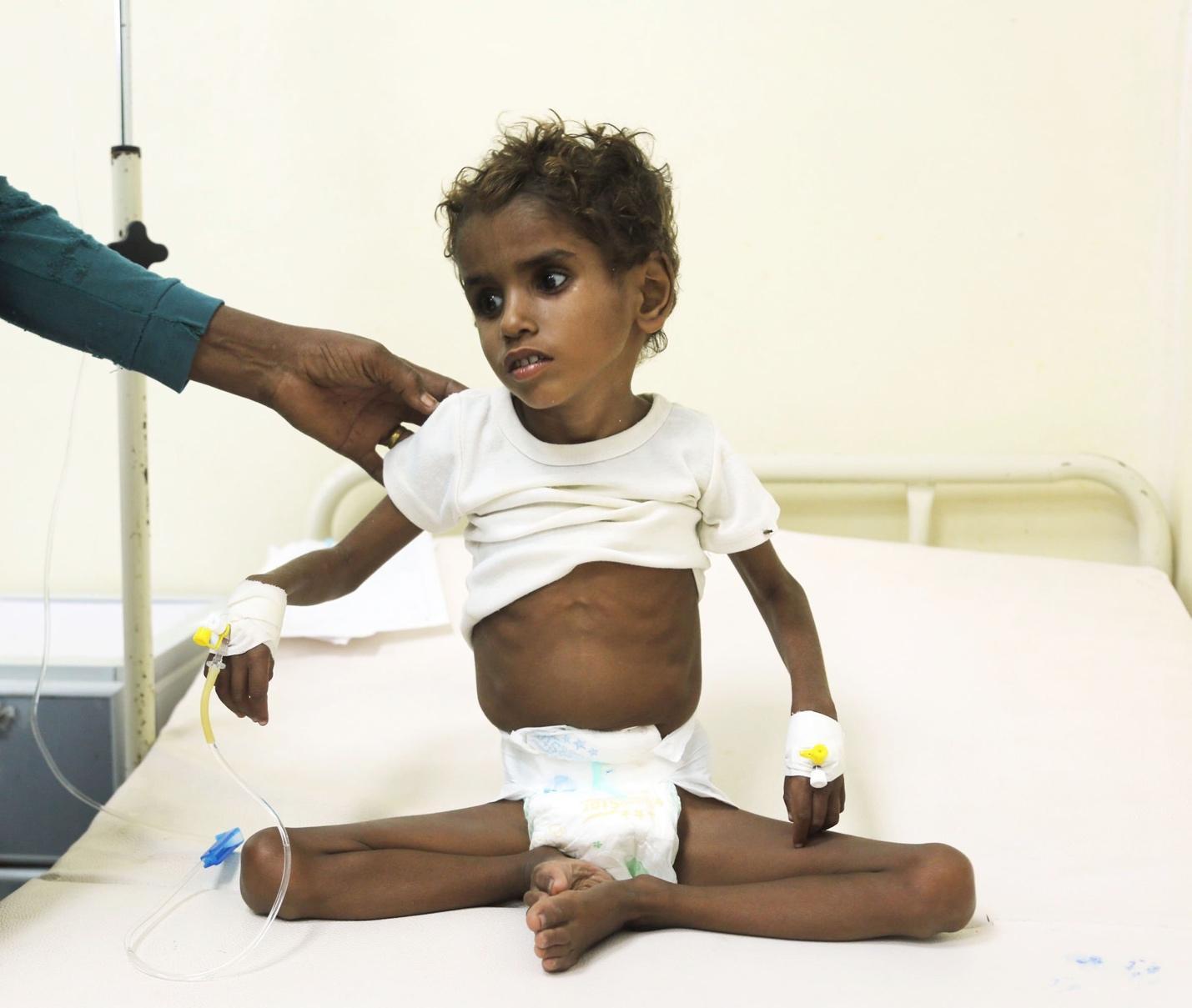
None of this would come as a shock to the U.S. officials who organized the support for this genocide. Obama administration cables reveal that, as early as 2016, members of the Obama legal team were deeply concerned about potential liability for war crimes in Yemen due to their participation in the violence.
This is all to say that the Obama administration, and the Trump and Biden administrations have been well aware that U.S. support has been devastating to the Yemeni people. This would seem to satisfy the 1948 Convention’s “intent” criterion for genocide culpability. Since the Obama decision to fully support Saudi Arabia and the UAE in their war on the people of Yemen, hundreds of thousands of Yemenis have been killed by aerial bombardment, destroyed civilian infrastructure, famine, and disease.
The U.S. role in this ongoing humanitarian disaster cannot be overstated. Yet, U.S. mainstream media have, until recently, barely exposed the U.S. role in this crisis and given that fact, it should be no surprise that U.S. school children rarely learn about the ongoing U.S. complicity in genocide.
Challenging the Savior Narrative in the Holocaust
The tragedy of the Holocaust extends even beyond its nine million victims of the 1930s and 1940s. The rampant slaughter that has occurred in the decades since the death camps closed has been disproportionately perpetrated by the very nation whose leaders incorrectly credit themselves with defeating German fascism.
The triumphalism of the United States after emerging from World War II as the world’s dominant power, combined with a view of the nation as the savior of the world’s people, has since led the superpower to pursue grandiose goals of world domination, killing millions in the process.
Those of us that caution against U.S. intervention are often met with the refrain, “Well what would you have done about the Holocaust?” as if that example is one that proves that U.S. military intervention can prevent mass murder. A factual accounting of history gives lie to the narrative that it was the actions of the United States that ended the Holocaust.
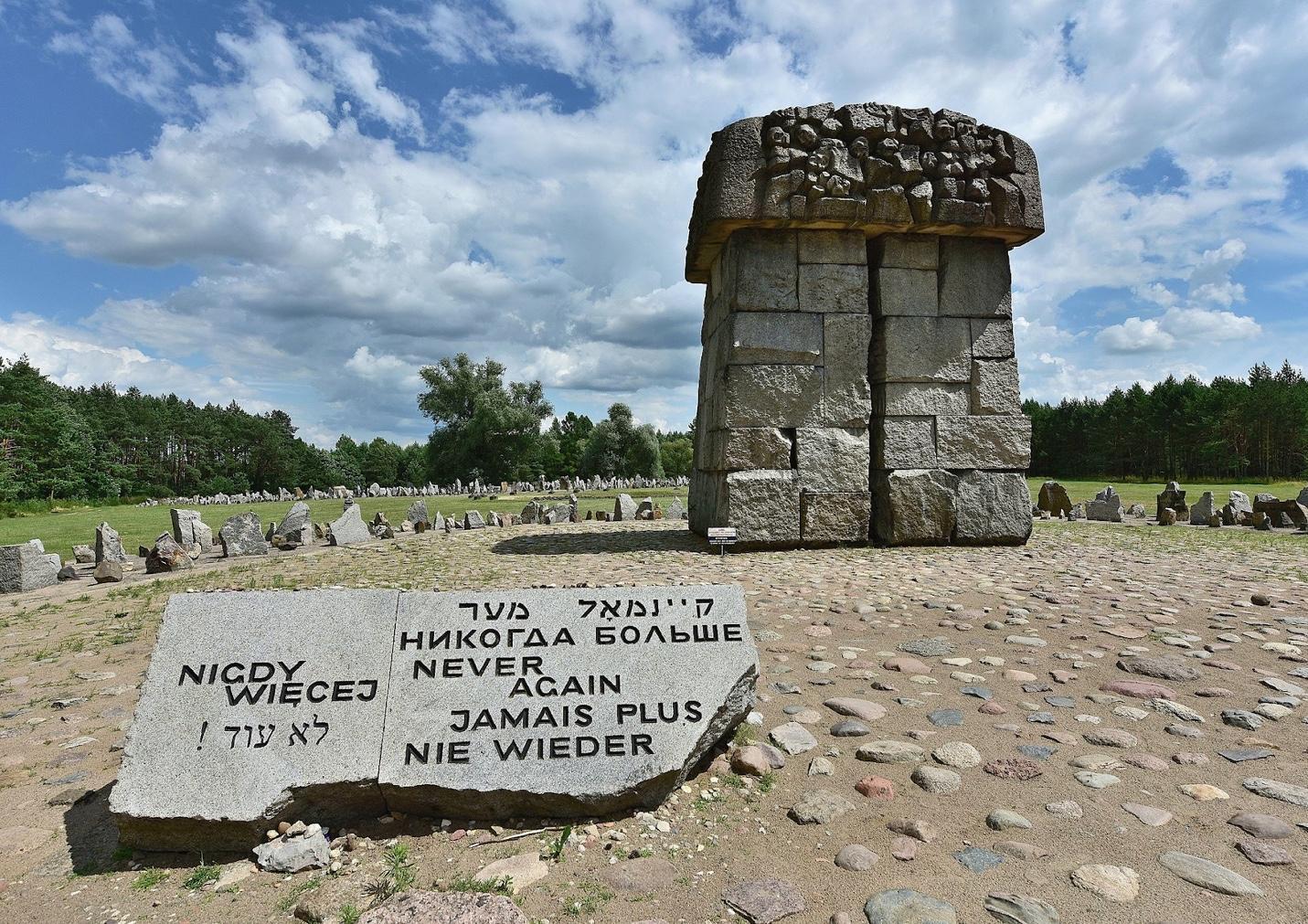
Zionist author David Wyman in fact makes a strong case that the FDR administration “abandoned the Jews.” In a 1984 blockbuster book, he points to the maintenance of strict immigration quotas, delays in establishing a second front against Hitler, the turning away of ships of Jewish refugees such as the S.S. St. Louis, and failure to bomb the rail lines to the concentration camps where Jews were being slaughtered.

The U.S. at best played a supporting role to what was largely a Soviet effort in defeating the Nazis. The numbers tell a story rather different than the fiction we are fed in the U.S. For starters, the sacrifices made by the Soviet population to defeat Nazism are unparalleled in human history. Some 26 million citizens of the USSR perished over the course of WWII. This compares to a tragic, but comparatively miniscule 400,000 U.S. civilian and enlisted military personnel who died in the conflict (actually even fewer when accounting for the fact that a significant portion of that total died fighting Japan).

To put that in starker terms, for every U.S. soldier killed fighting the Nazis, some 80 Soviets perished. The staggering Soviet death toll results from another reality that contradicts the U.S. “savior” narrative, that is, the fact that the large majority of German soldiers who fought and died in WWII, were deployed against the Soviet Union. Indeed, the Eastern Front was exponentially bloodier than the U.S. and UK-dominated Western counterpart, with 75% of German soldiers killed in the war having fallen due to Soviet bombs or bullets.

The USSR’s disparate totals of human sacrifice along, with German losses inflicted when compared to the United States, do not fully illustrate the depth to which the defeat of Nazism and subsequent end of the Holocaust should be credited to the communist state. The survival of Europe’s Jews was far and away a product of Soviet efforts.
According to Jewish leader James Rosenberg, the USSR is responsible for saving some 1,750,000 Jews from certain death, ten times the total saved by the rest of the world combined. Those who recall WWII as an example of U.S. military intervention that proves the just nature of U.S. violence should be forced to answer if they believe that same justification could be utilized for future aggression by the nation whose actions were most effective in ending the Holocaust: the Soviet Union. One can imagine that such an endorser of U.S. war-making would be simultaneously unlikely to justify the (rare by comparison) Soviet and Russian military escapades in the decades since WWII on a similar basis.
The view that the United States had an adversarial relationship with Nazism and fascism more generally, is ahistorical and dependent on a view of the U.S-Nazi dynamic beginning in 1941 and ending in 1945. If that window of time is expanded to both the periods before and after those four years, the U.S.-Nazi relationship is less obviously adversarial, and more in line with the one-time Facebook option to describe one’s relationship status… “It’s complicated.”
To characterize the USA’s position as “anti-fascist” prior to WWII requires one to ignore Hitler and his Nazi Party’s own admiration for U.S. history. Indeed, legal authorities within the party were particularly inspired by U.S. race law, seeing the apartheid structure of the Jim Crow South as a dynamic worth emulating. In his own writings, Hitler expressed acclaim for the USA’s genocidal treatment of the North American indigenous population and praised the creation of “living space” for white settlers through the ethnic cleansing and extermination of the continent’s original inhabitants.
The faux science of eugenics, so enthusiastically employed by the Third Reich to justify extermination, was a craft perfected within the U.S. scientific community. One can also not forget the multitude of U.S. corporations that were more than happy to do business with the German fascists, even as their imperial ambitions and persecution of the Jews became clear.

After World War II, the U.S. resumed its relationship with fascists under Operation Paperclip in which the United States hired 1,600 former Nazis to work within the highly militarized American scientific community. Among the U.S. institutions that employed Hitler’s henchmen was NASA, the space program that would eventually put Neil Armstrong on the moon.
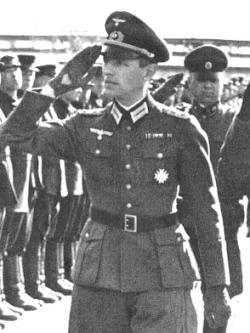
While some Nazis were tried and hung at Nuremberg, those that were deemed useful received amnesty. The U.S. and its allies employed Nazis in the new anti-communist security apparatus, selecting former Nazi intelligence officials such as Reinhard Gehlen to head West Germany’s anti-communist spy agency during the early years of the Cold War.
Post-WWII, in nations with a strong left-wing presence such as Italy and Greece, the U.S. supported former Nazi collaborators in efforts to violently destroy popular socialist-leaning parties. In the decades that followed the defeat of fascism in Germany, the United States would also lend its patronage to sub-fascist movements, which identified with European fascism in Bolivia, Paraguay, Argentina, and Chile.
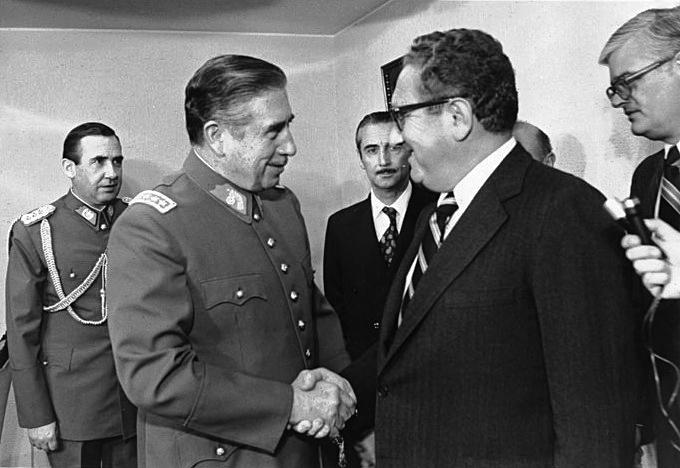
An honest analysis of the last century would acknowledge that the period between 1941 and 1945, when the United States fought Nazism, represents an exception rather than the rule with regard to the U.S. relationship to fascism. David Schmitz, in his book Thank God They’re on Our Side, shows a long U.S. preference for right-wing dictatorships and fascist and neo-fascist regimes over left-wing governments, which wanted to redistribute wealth and tried to assert national control over their resources and check the power of U.S.-multinational corporations.

This book should be assigned to students along with those written by other critical authors like Noam Chomsky and William Blum, and the record of U.S. foreign policy should be exposed so that history will not continuously be repeated.
The Less Convenient Genocides
While the United States can be said to have played an inspirational, even an enabling, part in the Holocaust, in the many instances of genocide that have followed, the U.S. role was far more pronounced. These are precisely the mass atrocities that are rarely taught in U.S. schools.
Even educational programs that seek to develop awareness of these crimes, such as Facing History and Ourselves, often have curriculum couched in teaching students to avoid being a “bystander” as such atrocities are carried out. This is a nod to the common, but sanitized, critique of U.S. policy toward genocide as having “just stood by” as the crime was perpetrated.

In reality, U.S. policy toward systematic murder can more accurately be characterized in many cases as having supported and actively participated in them, rather than having a passive role. The reason has often centered on the U.S. desire to establish a global military empire and to secure new opportunities for U.S. corporations—a fact that is also suppressed in most school curriculums, which continue to advance the fiction that the U.S. stands for democracy in the world.
The flawed manner in which the topic of genocide is covered in schools is tied not only to an ethno-centric and nationalistic outlook that is inculcated in students, but also to a deeply rooted racism, which attributes all major atrocities in the world to “darker-skinned” people whom the U.S. needs to “go out and save.” This narrative reinforces a colonialist paradigm that obscures how U.S. and Western imperialism provokes ethnic killings and atrocities around the world.

Indonesia: The Communists Made Us Do It!
If the U.S. education system were serious about teaching genocide, it would include in its curriculum a series of acts that CIA officials themselves acknowledged was, “one of the worst mass killings of the twentieth century.” These officials were referring to an event in which their agency was an active participant, the Indonesian extermination campaign of 1965.

The archipelago nation had gained independence from the Dutch just after the Second World War. Unnerving to the fervently anti-communist United States was the ascension to power of the anti-imperialist leader, Achmed Sukarno.
With anti-imperialism and decolonization at the core of his belief system, Sukarno gained global popularity. He developed Indonesia into a leading nation within the multinational Third World movement, which promoted economic independence, modernizing development, and solidarity among the people of the formerly colonized world.

All of this was alarming enough to elites within the U.S. national security establishment. Further exacerbating their concern was the fact that Sukarno had close ties to the Indonesian Communist Party (PKI), the largest left-wing party in the world. In the containment-obsessed minds of U.S. elites, Sukarno and the PKI had to be destroyed.
After years of attempting to break up the island nation through covert bombing campaigns, grooming support for opposition religious groups, and training of military officers, the opportunity to act more forcefully presented itself on September 30, 1965. Using the murder of eight generals within the Indonesian army as pretext, the military, under the leadership of General Suharto, seized control of the government from Sukarno.
The army then carried out a campaign of mass extermination of over a million suspected leftists that would continue until March of the following year. This was accomplished in brutal fashion with victims’ bodies dumped in rivers or buried in mass graves.

The United States created the groundwork for the coup through police training programs and arms transfers and was an active participant in the genocide that followed. Recently released cables reveal that U.S. officials in Indonesia were kept fully aware of the killings and reported the atrocities to Washington as they occurred.
![Indonesian leftists being herded off to public execution. [Source: Unknown]](https://covertactionmagazine.com/wp-content/uploads/2021/04/indonesian-leftists-being-herded-off-to-public-exe.jpeg)
Far from being a passive observer, the U.S. proved instrumental in the “success” of eradicating the Indonesian left. This assistance included providing communications equipment to spread anti-communist propaganda, along with help in suppressing media coverage of the slaughter. The U.S. embassy further provided lists of suspected leftists to be executed to the Indonesian military, which promptly carried out the task.
Robert J. Martens, a political officer in the U.S. embassy in Jakarta from 1963 to 1966, commented, “They probably killed a lot of people, and I probably have a lot of blood on my hands, but that’s not all bad.” The U.S. press was no less jubilant.
In an article titled “A Gleam of Light in Asia,” renowned New York Times journalist James Reston referred to the slaughter as “the most important of these [hopeful] developments.”

The history of U.S. support for genocide in Indonesia needs to be studied and understood by students so that they can have a realistic view of their government’s behavior, and so that they can work to develop a more enlightened foreign policy in the future.
East Timor: Extension of Suharto’s Killing Spree
General Suharto’s killing spree extended to East Timor, whose aspirations for independence he aimed to crush. Once again, Suharto’s crimes were enabled by the U.S. Suharto’s invasion took place on December 7, 1975, one day after he had met with U.S. President Gerald Ford and his Secretary of State, Henry Kissinger. Ford and Kissinger had greenlit the incursion at the previous day’s meeting. Their only demand was that Suharto not make the U.S. role too conspicuous and that he “succeed quickly.”
With weapons provided entirely by the United States, the Indonesian armed forces exterminated roughly 200,000 East Timorese, one-fifth of its population. Another 300,000 were uprooted from their homes and relocated into Indonesian-run concentration camps.
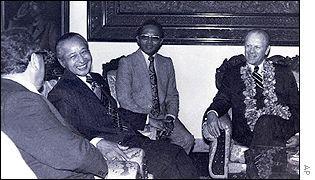
For the following 24 years, East Timor was subjected to brutal authoritarian occupation. Throughout that time, the United States continued to underwrite the barbarity, providing massive arms transfers to the occupying Indonesian forces, including $250 million of military assistance during the intensely violent four-year period immediately after the invasion.

Rarely discussed in mainstream media coverage are East Timor’s considerable crude oil and natural gas resources. One 2016 survey concluded there are 127 million barrels of oil. This reality may be indicative of very likely strategic interest of various outside powers in East Timor’s natural resources.
During the Indonesian army invasion, Uncle Sam provided diplomatic cover for the genocidaires and abstained from a 1975 UN vote condemning the invasion, while consistently voting against East Timor in the following years in the international forum. United States UN Ambassador Daniel Patrick Moynihan acknowledged this thwarting of the East Timorese at the UN when he wrote in his memoir,
“The U.S. wished things to turn out as they did in East Timor and worked to bring this about. The Department of State desired that the UN prove utterly ineffective in whatever measures it undertook. This task was given to me and I carried it out with no inconsiderable success.”

The way things turned out was that the East Timorese suffered two decades of occupation, murder and political repression. As Moynihan acknowledged, the outcome was the one that the U.S. desired—an admission of U.S. complicity in these crimes—rather than having “stood by and done nothing.”
Guatemala: A Tale of Two War Criminals
It may come as a surprise to school children in the U.S., along with their adult counterparts, that some nations actually attempt to hold their leaders to account for war crimes. In the U.S., such a practice would be antithetical to the version of justice wherein U.S. officials can commit war crimes as they choose and never face consequences in domestic or international courts.
If any evidence of this claim is needed, take note that not a single U.S. citizen has ever been prosecuted for illegal invasions that killed millions in Laos, Cambodia, Vietnam, and Iraq. The U.S. has never ratified the International Criminal Court because doing so might make its own leaders vulnerable to being prosecuted by it.
Many nations, however, have tried to hold leaders who abused their power to account. Guatemala for example, prosecuted its own former leader, Efraín Ríos Montt, for crimes against humanity and genocide. Such crimes referred to actions the former general took against the indigenous Mayan population, with total U.S. backing, in the 1980s.
Throughout the 1980s, the Reagan administration, as part of its crusade against so-called “communism” in Central America, provided arms, training, and diplomatic cover to the armed forces of Ríos Montt.

The U.S.-backed genocidal terror included the massacre of whole villages, widespread rape and torture, and the indefinite detention in concentration camps. These acts were perpetrated by Guatemalan death squads that were trained, armed, and coordinated by the United States. Such tactics were euphemistically described by Ríos Montt as “draining the sea,” justifying the extermination of civilians in an effort to destroy the leftist guerrillas they were perceived to have supported.

Reagan’s attitude toward such tactics can be summarized even prior to his assumption of the presidency. In 1980 U.S. generals who were advising the future president were sent to meet with the Guatemalan government, and reportedly informed the dictatorship that “Mr. Reagan recognizes that a good deal of dirty work has to be done.”
That favorable attitude toward the Guatemalan despot continued through Reagan’s administration with the president once describing Ríos Montt as “a man of great integrity.” One wonders how a high school student primed for the SAT would react to such blatant misuse of the word “integrity.”

Both Ríos Montt and Reagan are dead, but only Reagan’s legacy remains untainted by the official criminal charge of genocide.
By trying Ríos Montt for crimes against humanity, Guatemalans have taken steps to reconcile with the violence perpetrated by their past rulers. The trial’s proceedings also provide official documentation of the crimes in Guatemalan history. This serves to honor the victims, and also creates a path to move past the trauma that so many Guatemalans can attribute to that decade. No such record of an official criminal procedure to try members of the Reagan administration for genocide exists, and thus the crime can be ignored by those who determine our students’ essential curriculum.
The Bystander Narrative Is Not Real!
The cases of extermination in Indonesia, East Timor, and Guatemala hardly support the U.S. as a “bystander to genocide” or having a “Just stood by and did nothing” narrative. To highlight this, let’s try a hypothetical:
A corrupt cop sells guns to an organized crime syndicate, and then proceeds to pull legal strings to help that same organization avoid prosecution for the murders committed with the very same weapons he sold them …
Could it be argued that a police officer just “stood by” while atrocities were committed? This is the analog to the narrative presumed by the bystander narrative and it serves to exonerate the U.S. for the grave crimes it was explicitly perpetrating.
About Those Cases Where the U.S. Appears to Have Just “Stood By” . . .
Cambodia: Setting the Table for Genocide
There are cases where, at a surface level, the United States appears to have been absent while a genocide was being conducted. However, in many of those cases, the U.S. actually helped facilitate the conditions that led to genocide. This is true particularly in the case of the mass murder carried out by the Khmer Rouge government in Cambodia. While the United States was not officially involved in Pol Pot’s war crimes, U.S. actions set the stage. It perpetrated a coup in 1970 which removed Prince Sihanouk from leadership—the price he paid for remaining neutral in the U.S. war in Vietnam.

After installing a U.S.-friendly government, Richard Nixon and Henry Kissinger launched an illegal, non-congressionally authorized war in Cambodia, dubbing it Operation Menu. This “war” might better be described as a genocide from the sky, with U.S. planes dropping some 500,000 tons of bombs on the rural parts of the nation, decimating the countryside and terrorizing the peasantry.
It is hard to comprehend the trauma that the U.S.-made hellscape created, but it is easy to imagine how such victims might be easily radicalized; people forced to live through such events often are. Estimated death tolls may be as high as 150,000 with exponentially more Cambodians carrying lasting physical and mental wounds from the campaign. One Cambodian spoke of his experience:
“Three F-111s bombed right center in my village, killing eleven of my family members. My father was wounded but survived … 27 other villagers were also killed. They had run into a ditch to hide and then two bombs fell right into it.”

Years later, the survivors of such destabilization sought revenge and Pol Pot and his Khmer Rouge provided the opportunity. Unfortunately, aggrieved people often are unable to direct their anger at those who are directly responsible for their crimes and end up redirecting their retributional violence toward easier targets.
This was evident in 1976 as the radicalized rural Cambodian victims of saturation bombing were unable to have Henry Kissinger extradited to face justice in Southeast Asia. However, they were able to direct their vengeance at the urban Cambodian intellectuals and upper class who were perceived by the peasantry to be responsible for allowing the aforementioned atrocities to occur.
The Khmer Rouge utilized the grief of the rural population to mobilize their forces against the perceived urban elite, with even the CIA conceding, “They are using damage caused by B-52 strikes as the main theme of their propaganda.”
When the Khmer Rouge took the capital of Phnom Penh in 1975, the results were catastrophic. During the subsequent four years, 1.5-2 million intellectuals and perceived elites would be executed, many because of the perception that they had been complicit in the U.S. bombing campaign.

Earlier in this article it was mentioned that Nazi party elites were influenced by the United States. In the case of the Cambodian genocide, it was the masses that were put into genocidal motion by the actions of the U.S. Thus, like the events in Europe in the 1930s and ’40s, the history of the Cambodian genocide is incomplete without mentioning the role of the global superpower.
The U.S. in the case of Cambodia not only helped to create conditions that brought Cambodia’s Khmer Rouge to power in 1975, but actively supported the genocidal force, politically and financially because Cambodia invaded Vietnam which the U.S. wanted to punish for humiliating it during the Vietnam War. By January 1980, the U.S. was secretly funding Pol Pot’s exiled forces on the Thai border. The extent of this support, $85 million from 1980-86, was revealed 6 years later in correspondence between congressional lawyer Jonathan Winer, then counsel to Sen. John Kerry (D-MA) of the Senate Foreign Relations Committee and the Vietnam Veterans of America Foundation.
East Pakistan: Murderous Diplomacy
The charge that the United States “did nothing” is often advanced pertaining to genocides in Bangladesh in 1971 and Rwanda in 1994.

Once again, for both of these cases, an analysis of the larger context renders the U.S. far more culpable than just having sat idly and permitted the crimes to be perpetrated.
In 1971, at the command of military dictator General Agha Muhammad Yahya Khan, the Pakistani army carried out massacres in what was then East Pakistan (now Bangladesh).
West Pakistan’s terror killed approximately two million Bengalis, and created a refugee crisis with neighboring India which caused a subsequent military confrontation.
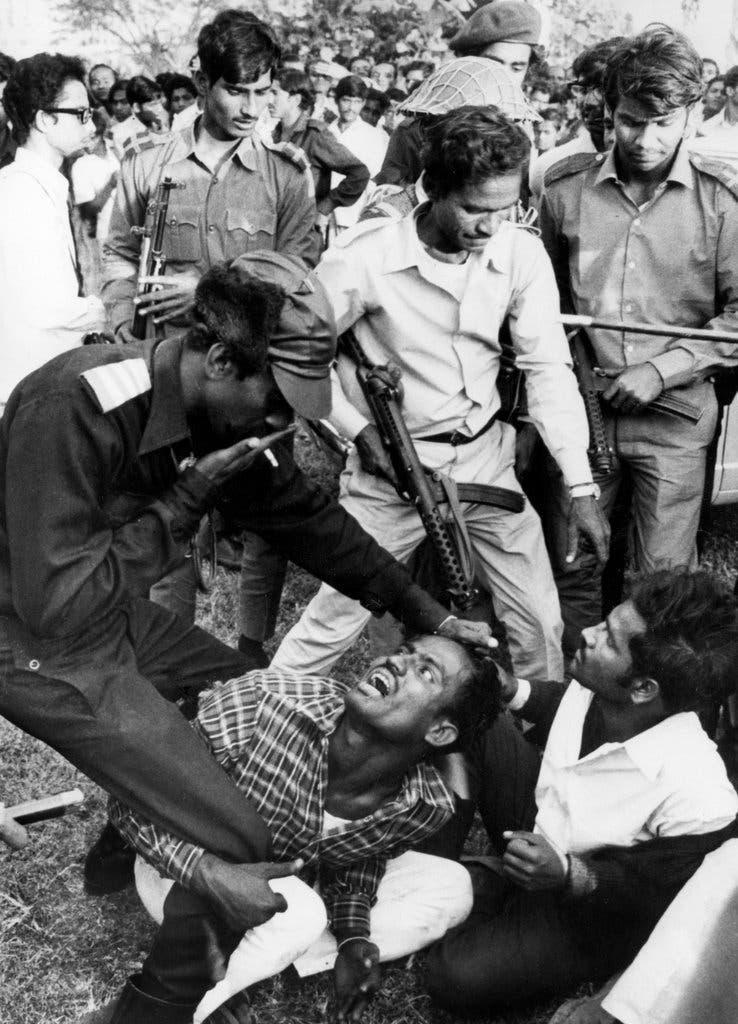
A detail that should immediately dissuade one of the “U.S. as bystander” narrative is that the culpable military was armed with U.S. weapons. Even as Congress put a halt to arms transfers to Pakistan as the atrocities persisted, the Nixon administration (largely through the maneuvering of Henry Kissinger) continued to arm the perpetrators through third parties.
Cables exposed by the National Security Archive reveal the U.S. leaned heavily on allies Jordan, Turkey, and Iran to continue to arm the Pakistani army, even as the scope of the massacres became well-known to U.S. officials.
While acknowledging that no nation, even one as powerful as the U.S., is capable of preventing or stopping all massacres in far-away places, this is not a case where the U.S. wielded no influence.
The U.S. and Pakistan enjoyed a very warm relationship, one that could possibly have been leveraged to influence Yahya’s decision-making. However, not even the most meager attempt was made to alter the situation in East Pakistan, as Nixon and Kissinger failed to even verbally condemn the actions, much less threaten loss of military or economic aid.
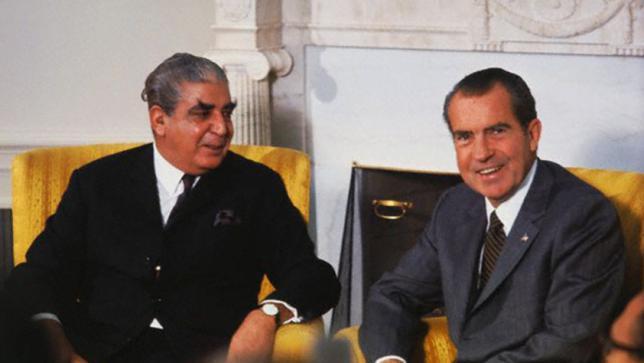
U.S. officials, such as Consul General to East Pakistan Archer Blood, had made explicit to the administration the details of the slaughter.

Archer Blood [Source: adst.org] 
The historic Blood telegram. [Source: thedailystar.net]
Instead of acting upon the information that Blood gave in his “blood telegram,” the Nixon administration demonized him, with Kissinger referring to him as a “maniac.” Here again we see a lack of regard for human rights by the Executive branch of the U.S. government, which is a teachable moment for students who, it might be hoped, work for change in their lifetimes.

Rwanda: Purposeful Misremembering of History
Much like the Holocaust, the 1994 genocide of the ethnic minority Tutsi population in Rwanda has been misremembered to push forward the “U.S. stood by and did nothing” narrative. This messaging, immortalized in the 2004 film Hotel Rwanda, portends that the United States must always be proactive in preventing potential genocides through the use of military force.
In the case of Rwanda, the U.S. was no mere bystander to genocide but, rather, like Cambodia, created the circumstances that led it to be carried out, and supported wide-scale mass killings in the country. In 1990, the U.S. supported the invasion of Rwanda from Uganda by the expatriate Rwandan Patriotic Front (RPF), which initiated the civil war in which the 1994 genocide occurred.
The RPF, led by Paul Kagame, who was trained in psychological warfare techniques at the U.S. Army base at Fort Leavenworth, Kansas, committed industrial-scale violence against the ethnic Hutu population of Rwanda that included mass imprisonment, torture, and mass executions in the Byumba soccer stadium.
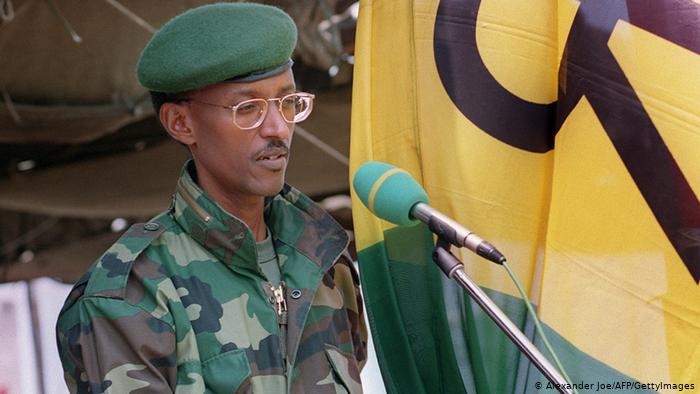
The event that triggered the mass killings was the assassination of Rwanda’s Hutu president, and Kagame rival, Juvenal Habyarimana. According to several investigations, including one by a UN appointed team, the shoot-down of Habyarimana’s plane was ordered by Kagame.
The RPF’s own former head of intelligence, Kyumba Nyamwasa, has detailed that he was present when Kagame gave the order to carry out the execution of the president. Nyamwasa even insisted, “It is only Kagame who had interest in Habyarimana’s death,” likely referring to the fact that Habyarimana would have likely won the upcoming Rwandan election, providing Kagame with motive for the crime.

In 2011, another one of Kagame’s former subordinates, Theogéne Rudasingwa, affirmed that the dictator acknowledged that he had ordered the plane shot down, and spoke of it with “characteristic callousness and much glee.” Rudasingwa was taking a risk with such a revelation, as hit squads affiliated with Kagame have perpetrated cross-border murders of other ex-RPF members who had knowledge of Kagame’s complicity in Habyarimana’s assassination.
Following the murder of Habyarimana, and within the chaos of the violence that followed, Kagame’s RPF forcefully took control of Kigali, and assumed leadership of Rwanda. In the following years Kagame proceeded to launch extermination campaigns against ethnic Hutus both within Rwanda and in the neighboring countries. Violence in Central Africa was exacerbated after Kagame ordered outright invasions of the Democratic Republic of Congo. These incursions sparked wars that killed millions, and resulted in opening the Central African nation to exploitation by Western mining corporations.

The 1994 massacre of the Tutsis that followed should go down as one of the great tragedies of the 20th century. The fact that students in the U.S. are taught about this event in a way that obscures their own government’s complicity exacerbates the tragedy exponentially.
Liberal hawks and neoconservatives have weaponized this misunderstood history to justify catastrophic interventions in places such as Libya and Syria, all under the guise of “doing something” to prevent atrocities.
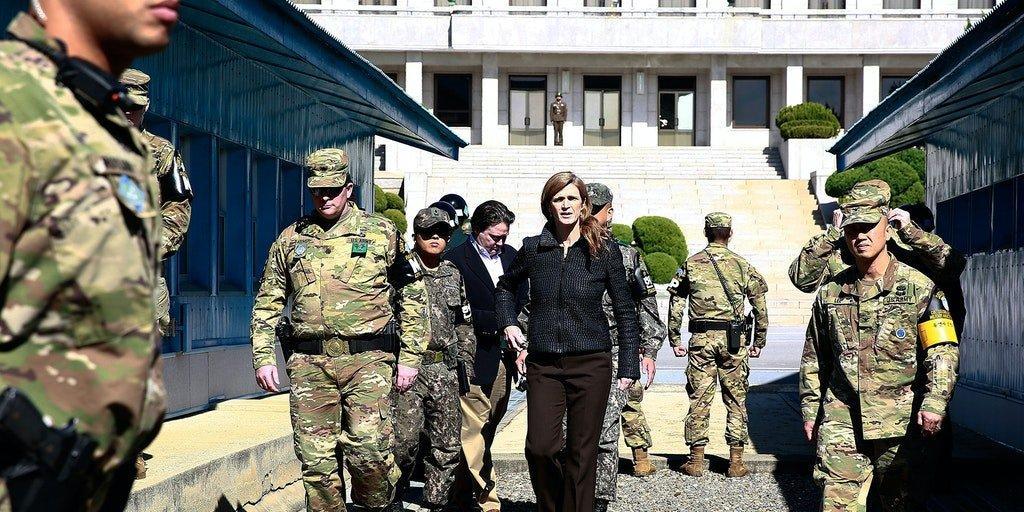
U.S. citizens need to be educated to the fact that their government’s greatest sins with regard to genocide are far more accurately characterized as active participation and facilitation of the act, doing something, rather than failing to act.
A Demand for Change
A curriculum on genocide will prove insufficient in preventing future perpetrations of the act if it is limited in its scope either:
1. By only focusing on the Holocaust at the expense of the many other genocides in which the U.S. played a key role;
OR
2. If other instances of the crime are presented, they are studied in a manner that exonerates the U.S. government of its complicity.
Both of these versions of genocide education render the large majority of victims unseen. Additionally, they are anathema to what should be the goal of all our classes: to teach global empathy.
Furthermore, by omitting incidents which paint the United States in a negative light, we are helping to cultivate American exceptionalism, a belief that has caused the deaths of millions of people.
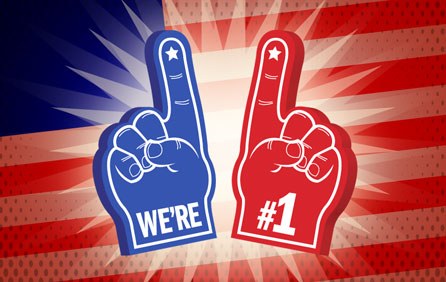
By not teaching about these events, we are allowing students to assume uncritically that their nation acts with “good intentions,” and by extension we are effectively manufacturing consent for current and future violent U.S. actions.
A government can only perpetuate mass-scale violence with a citizenry that supports, or at least tolerates, it. If U.S. students have a sanitized view of their own nation’s past actions, they are less likely to object to U.S. policies in their adult lives, when they will have the ability to influence those policies.
Finally, by prioritizing the Holocaust, whose victims were mostly white, while omitting these other genocides which victimized black and brown populations of the developing world, it communicates a sense of white lives having more value than non-white lives. Are we comfortable with this?
Unlike Germany, Japan, South Africa, Guatemala and Argentina, the U.S. has never been forced to reckon with its crimes. There have been no nationally recognized war-crimes trials, truth and reconciliation hearing, reparations paid, etc. These actions are not going to be forced from external powers (the U.S. refuses to participate in the International Criminal Court), so it is on us as educators to create a generation that holds its leading officials accountable.
No More thought Control—Some Suggestions
1. Keep teaching the Holocaust!

None of the above interpretations argues that the Holocaust should not be taught. In fact, the opposite is true. History educators should help students contextualize those mass killings by extending the discussion to include a focus on the international environment that enabled the Nazi regime to take root. This would include discussion of the FDR administration’s “abandonment of the Jews,” which is not often covered in standard curriculum, and U.S. corporations’ ties to Nazi Germany. It is also important to teach that the U.S. worked with ex-Nazis immediately after WWII. This creates a more nuanced view of WWII that complicates the narrative of the U.S. as the global savior (an idea that continues to justify violence perpetrated by the U.S. government to this day).
2. Emphasize the historically unparalleled power of the United States government and its plutocratic interests:
As we teach, students need to understand that they live in the most powerful empire in human history (1,000 military bases, near trillion-dollar annual budgets for war, economic and diplomatic supremacy, sanctioning a considerable percentage of the world’s population, etc.). Given this power dynamic between the U.S. and the rest of the world, and its well-documented propensity for violence, we have a responsibility to try to puncture the myths of American exceptionalism or superiority.

3. Eradicate the sanitizing “just stood by” narrative:
As articulated earlier, the United States’ greatest crimes with regard to genocide have almost never been a failure to act. As educators, we need to emphasize that in the decades since the Holocaust, the United States has played an active role in, at minimum, six instances of genocide, in none of which the U.S. could be described as having played too passive a role.
For a metaphor, consider an educator who is teaching a class about the scourge of police corruption. If one were teaching in a school in a city which was one of the nation’s leaders in police corruption, it would be illogical to focus on police corruption in some far-away municipality, halfway across the nation. Similarly, courses focused on the topic of genocide in the U.S. should spotlight the U.S. government’s role in these crimes. Such a curriculum would give the “Never again” aspiration a chance to move from the realm of “pie in the sky” to a realistic possibility.

CovertAction Magazine is made possible by subscriptions, orders and donations from readers like you.
Blow the Whistle on U.S. Imperialism
Click the whistle and donate
When you donate to CovertAction Magazine, you are supporting investigative journalism. Your contributions go directly to supporting the development, production, editing, and dissemination of the Magazine.
CovertAction Magazine does not receive corporate or government sponsorship. Yet, we hold a steadfast commitment to providing compensation for writers, editorial and technical support. Your support helps facilitate this compensation as well as increase the caliber of this work.
Please make a donation by clicking on the donate logo above and enter the amount and your credit or debit card information.
CovertAction Institute, Inc. (CAI) is a 501(c)(3) non-profit organization and your gift is tax-deductible for federal income purposes. CAI’s tax-exempt ID number is 87-2461683.
We sincerely thank you for your support.
Disclaimer: The contents of this article are the sole responsibility of the author(s). CovertAction Institute, Inc. (CAI), including its Board of Directors (BD), Editorial Board (EB), Advisory Board (AB), staff, volunteers and its projects (including CovertAction Magazine) are not responsible for any inaccurate or incorrect statement in this article. This article also does not necessarily represent the views the BD, the EB, the AB, staff, volunteers, or any members of its projects.
Differing viewpoints: CAM publishes articles with differing viewpoints in an effort to nurture vibrant debate and thoughtful critical analysis. Feel free to comment on the articles in the comment section and/or send your letters to the Editors, which we will publish in the Letters column.
Copyrighted Material: This web site may contain copyrighted material the use of which has not always been specifically authorized by the copyright owner. As a not-for-profit charitable organization incorporated in the State of New York, we are making such material available in an effort to advance the understanding of humanity’s problems and hopefully to help find solutions for those problems. We believe this constitutes a ‘fair use’ of any such copyrighted material as provided for in section 107 of the US Copyright Law. You can read more about ‘fair use’ and US Copyright Law at the Legal Information Institute of Cornell Law School.
Republishing: CovertAction Magazine (CAM) grants permission to cross-post CAM articles on not-for-profit community internet sites as long as the source is acknowledged together with a hyperlink to the original CovertAction Magazine article. Also, kindly let us know at info@CovertActionMagazine.com. For publication of CAM articles in print or other forms including commercial internet sites, contact: info@CovertActionMagazine.com.
By using this site, you agree to these terms above.
About the Author
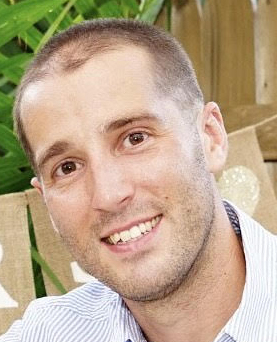
Matt Mckenna is a teacher in Bergen County New Jersey and teaches AP United States History.
Prior to that job, he was a teacher for a decade in the Bronx (2007-2017).
He can be reached at: mckenna6@gmail.com







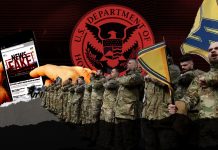
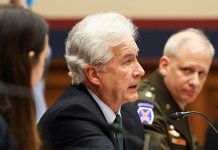


In most states they do not teach about the Holocaust in public schools. This is another topic that should be taught in public schools.
Stalin had nearly a million of his own citizens executed, beginning in the 1930s. Millions more fell victim to forced labor, deportation, famine, massacres, and detention and interrogation by Stalin’s henchmen.
The USA killed a million in Laos.
Three million were killed in Vietnam. Agent Blue was sprayed on rice crops that caused starvation.
https://www.youtube.com/watch?v=9sQHDlF93a4
I agree that the United States needs to do a better job of teaching people about past injustices. But at least it is not like in Russia where all of Stalin’s atrocities have been completely removed from the history books.
[…] U.S. Schools Support Genocide Denial and What To Do About It […]